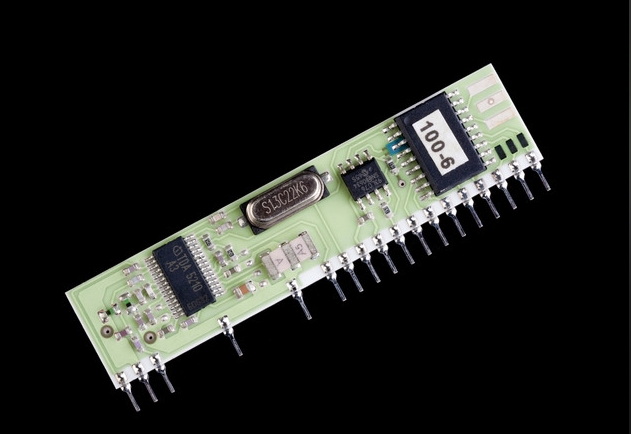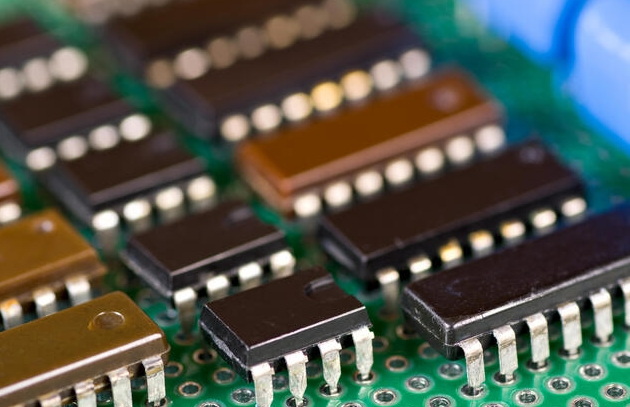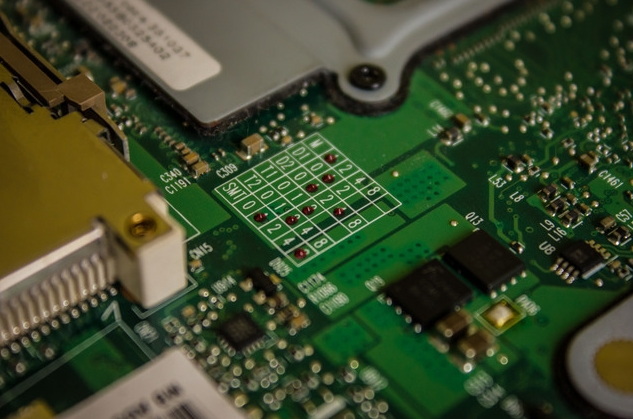Content Menu
● Factors Affecting SMT Nozzle Performance
>> Internal Factors
>> External Factors
● Maintenance Practices for SMT Nozzles
● Case Studies on Nozzle Performance Optimization
>> Case Study 1: Automotive Electronics Manufacturer
>> Case Study 2: Consumer Electronics Assembly Line
>> Case Study 3: PCB Manufacturer
● Conclusion
● Frequently Asked Questions (FAQ)
>> 1. What is the role of vacuum pressure in SMT nozzle performance?
>> 2. How often should SMT nozzles be replaced?
>> 3. Can environmental conditions affect SMT nozzle performance?
>> 4. What maintenance is required for SMT nozzles?
>> 5. How does component type influence nozzle selection?
Surface Mount Technology (SMT) nozzles are integral components in the electronic manufacturing process, particularly in the pick-and-place operation. Their performance directly influences the efficiency, accuracy, and overall quality of the assembly process. This article delves into the various factors that affect SMT nozzle performance, categorized into internal and external factors, while also exploring maintenance practices that can enhance their effectiveness.

Factors Affecting SMT Nozzle Performance
The performance of SMT nozzles can be influenced by a variety of factors, which can be categorized into internal and external factors.
Internal Factors
1. Vacuum Negative Pressure: The vacuum negative pressure generated by the nozzle is crucial for securely holding components during the pick-and-place operation. Insufficient vacuum pressure can lead to components being dropped or misaligned. Typically, a negative pressure of at least 400mmHg is required for optimal performance. It is essential to regularly check and maintain the vacuum system to ensure it operates effectively.
2. Nozzle Condition: The physical condition of the nozzle significantly impacts its performance. Worn or damaged nozzles can lead to poor component handling and increased defect rates. Regular inspection and maintenance are necessary to ensure that nozzles remain in good working order. This includes checking for wear, damage, or blockages that could affect suction.
3. Filter Cleanliness: The cleanliness of filters in the vacuum system is vital for maintaining suction power. Clogged filters can reduce airflow and suction capability, leading to ineffective component handling. Regular cleaning and replacement of filters are essential to maintain optimal performance.
4. Nozzle Design: Different nozzle designs are suited for different types of components. The shape, size, and material of the nozzle must match the components being placed to ensure effective handling. For instance, larger components may require wider nozzles or specialized designs to accommodate their shape.
5. Maintenance Practices: Proper maintenance practices are crucial for ensuring the longevity and performance of SMT nozzles. This includes regular cleaning, timely replacement of worn parts, and adherence to recommended maintenance schedules.
6. Material Quality: The materials used in nozzle construction can affect performance significantly. High-quality materials that resist wear and deformation under operational stresses will enhance nozzle longevity and reliability.
7. Nozzle Length: The length of the nozzle tip plays a critical role in component pickup and placement accuracy. Short or worn nozzles may result in poor pickup and incorrect placement into solder paste, leading to defects.
8. Nozzle Geometry: The geometry of the nozzle affects airflow dynamics and suction efficiency. A well-designed nozzle will optimize airflow patterns to enhance component pickup while minimizing turbulence that could lead to drop failures.
External Factors
1. Component Type: The size and shape of the components being placed can affect nozzle performance significantly. Components with irregular shapes or varying weights may require specific nozzle designs to ensure proper handling and placement accuracy.
2. Environmental Conditions: Factors such as humidity and temperature can influence the materials used in nozzles and their ability to function correctly. Extreme conditions may lead to expansion or contraction of materials, affecting the fit and seal of nozzles.
3. Machine Calibration: Proper calibration of the pick-and-place machine is essential for optimal nozzle performance. Misalignment during setup can lead to placement errors, reduced efficiency, and increased defect rates.
4. Operator Skill Level: The skill level of operators handling SMT machines can also impact nozzle performance. Well-trained operators are more likely to understand how to adjust settings appropriately and maintain equipment effectively.
5. Production Speed: High-speed production lines may place additional stress on nozzles as they attempt to keep up with rapid component placement demands. This increased workload can lead to faster wear and tear if not managed properly.
6. Quality of Components: The quality of electronic components themselves is also an important factor affecting placement efficiency. Bent or broken pins on components may prevent the nozzle from picking up and placing them correctly, adversely impacting product quality.
7. Program Settings: Errors in program settings for placement machines can significantly impact efficiency. Incorrect settings may lead to inaccurate placements or even component drop failures during operation.
8. Solder Paste Quality: The quality of solder paste used in conjunction with SMT processes can also affect how well components adhere after placement, influencing overall assembly quality.

Maintenance Practices for SMT Nozzles
To ensure optimal performance from SMT nozzles, regular maintenance is essential:
1. Daily Cleaning: Schedule daily cleaning routines for both feeders and nozzles to remove debris that could hinder operation.
2. Inspection Protocols: Implement regular inspection protocols to identify signs of wear or damage early on.
3. Use Quality Cleaning Solutions: Employ specialized cleaning solutions that effectively remove contaminants without damaging nozzle surfaces.
4. Proper Storage: When not in use, store nozzles in protective cases provided by manufacturers to prevent damage.
5. Monitor Performance Metrics: Keep track of key performance metrics such as component pickup rates and placement accuracy to identify any deviations from expected standards.
6. Training Programs: Invest in training programs for operators to ensure they understand how to maintain equipment properly and recognize issues before they escalate.
7. Preventive Maintenance Schedule: Establish a preventive maintenance schedule that includes routine checks on vacuum systems, filters, and nozzle conditions.
8. Documentation of Maintenance Activities: Maintain records of all maintenance activities performed on SMT nozzles; this documentation helps track performance over time and informs future maintenance decisions.
9. Replacement Parts Inventory Management: Keep an inventory of commonly needed replacement parts for nozzles so that repairs can be made quickly without significant downtime.
10. Feedback Loop with Operators: Create a feedback loop where operators can report issues with nozzle performance immediately; this helps address problems proactively before they escalate into larger issues affecting production quality.
Case Studies on Nozzle Performance Optimization
To better understand how these factors play out in real-world scenarios, consider these case studies:
Case Study 1: Automotive Electronics Manufacturer
An automotive electronics manufacturer faced challenges with high defect rates due to improper component placements caused by worn-out nozzles. After conducting a thorough analysis:
- They implemented a preventive maintenance schedule focusing on daily inspections.
- Operators were trained on proper handling techniques.
- They switched to higher-quality materials for their nozzles which resulted in a 30% reduction in defects over three months.
Case Study 2: Consumer Electronics Assembly Line
A consumer electronics assembly line struggled with varying environmental conditions affecting their production quality:
- They invested in climate control systems within their production area.
- Regular monitoring allowed them to adjust machine settings based on humidity levels.
- As a result, they saw improved consistency in component pickup rates leading to a 20% increase in overall throughput without increasing labor costs.
Case Study 3: PCB Manufacturer
A printed circuit board (PCB) manufacturer noticed discrepancies between expected output rates versus actual results:
- They reviewed their machine calibration processes.
- Adjustments were made based on operator feedback regarding program settings.
- This led to a significant improvement in alignment accuracy resulting in fewer errors during assembly processes.
Conclusion
In conclusion, the performance of SMT nozzles is influenced by a multitude of internal and external factors ranging from vacuum pressure and nozzle condition to environmental conditions and operator skill levels. By understanding these factors and implementing regular maintenance practices alongside continuous training programs for operators, manufacturers can enhance the efficiency and accuracy of their SMT processes significantly. Continuous monitoring and improvement will ensure high-quality production outcomes while minimizing defects associated with poor nozzle performance.

Frequently Asked Questions (FAQ)
1. What is the role of vacuum pressure in SMT nozzle performance?
Vacuum pressure is crucial for holding components securely during the pick-and-place process; insufficient vacuum can lead to dropped components or misalignment during transport.
2. How often should SMT nozzles be replaced?
Nozzles should be inspected regularly; replacement is necessary when wear or damage is observed to maintain optimal performance levels.
3. Can environmental conditions affect SMT nozzle performance?
Yes, humidity levels and temperature fluctuations can impact material properties used in nozzles, potentially leading to operational inefficiencies.
4. What maintenance is required for SMT nozzles?
Regular cleaning, inspections for wear or damage, filter replacements, and adherence to preventive maintenance schedules are essential tasks for maintaining nozzle efficiency.
5. How does component type influence nozzle selection?
Different components require specific nozzle designs based on their size, shape, weight, and other characteristics; matching these attributes ensures effective handling during placement operations.




















